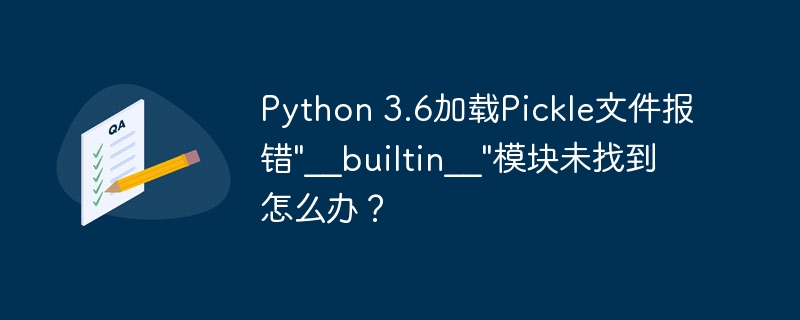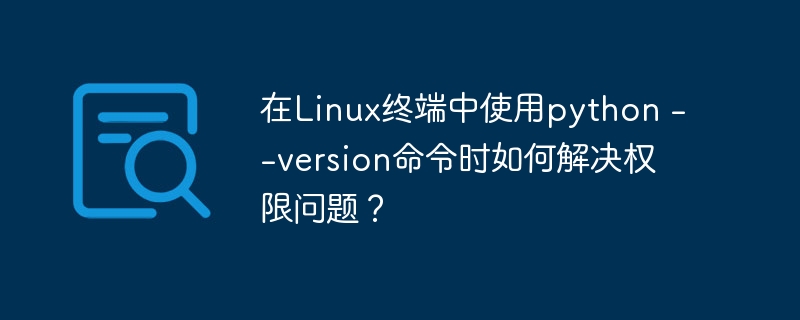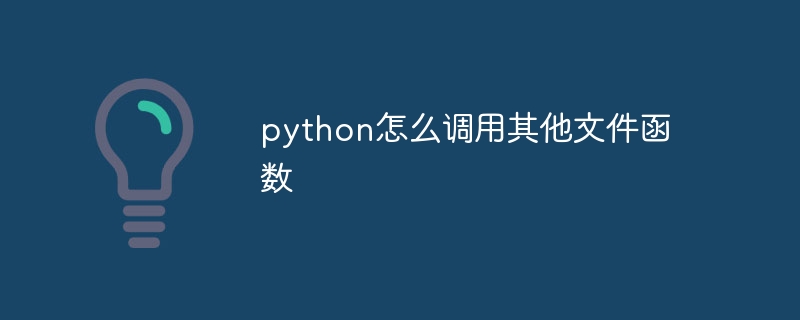创建最奇怪的混淆程序,打印字符串“hello world!”。我决定写一篇解释它到底是如何工作的。所以,这是 python 2.7 中的条目:
(lambda _, __, ___, ____, _____, ______, _______, ________:
getattr(
__import__(true.__class__.__name__[_] + [].__class__.__name__[__]),
().__class__.__eq__.__class__.__name__[:__] +
().__iter__().__class__.__name__[_____:________]
)(
_, (lambda _, __, ___: _(_, __, ___))(
lambda _, __, ___:
chr(___ % __) + _(_, __, ___ // __) if ___ else
(lambda: _).func_code.co_lnotab,
_ << ________,
(((_____ << ____) + _) << ((___ << _____) - ___)) + (((((___ << __)
- _) << ___) + _) << ((_____ << ____) + (_ << _))) + (((_______ <<
__) - _) << (((((_ << ___) + _)) << ___) + (_ << _))) + (((_______
<< ___) + _) << ((_ << ______) + _)) + (((_______ << ____) - _) <<
((_______ << ___))) + (((_ << ____) - _) << ((((___ << __) + _) <<
__) - _)) - (_______ << ((((___ << __) - _) << __) + _)) + (_______
<< (((((_ << ___) + _)) << __))) - ((((((_ << ___) + _)) << __) +
_) << ((((___ << __) + _) << _))) + (((_______ << __) - _) <<
(((((_ << ___) + _)) << _))) + (((___ << ___) + _) << ((_____ <<
_))) + (_____ << ______) + (_ << ___)
)
)
)(
*(lambda _, __, ___: _(_, __, ___))(
(lambda _, __, ___:
[__(___[(lambda: _).func_code.co_nlocals])] +
_(_, __, ___[(lambda _: _).func_code.co_nlocals:]) if ___ else []
),
lambda _: _.func_code.co_argcount,
(
lambda _: _,
lambda _, __: _,
lambda _, __, ___: _,
lambda _, __, ___, ____: _,
lambda _, __, ___, ____, _____: _,
lambda _, __, ___, ____, _____, ______: _,
lambda _, __, ___, ____, _____, ______, _______: _,
lambda _, __, ___, ____, _____, ______, _______, ________: _
)
)
)
不允许使用字符串文字,但我为了好玩设置了一些其他限制:它必须是单个表达式(因此没有打印语句),具有最少的内置用法,并且没有整数文字。
开始使用
由于我们无法使用打印,我们可以写入 stdout 文件对象:
import sys
sys.stdout.write("hello world!
")
但是让我们使用较低级别的东西:os.write()。我们需要 stdout 的文件描述符,它是 1(可以使用 print sys.stdout.fileno() 检查)。
import os
os.write(1, "hello world!
")
我们想要一个表达式,所以我们将使用 import():
__import__("os").write(1, "hello world!
")
我们还希望能够混淆 write(),因此我们将引入 getattr():
getattr(__import__("os"), "write")(1, "hello world!
")
这是起点。从现在开始,一切都将混淆三个字符串和整数。
将字符串串在一起
“os”和“write”相当简单,因此我们将通过连接各个内置类的部分名称来创建它们。有很多不同的方法可以做到这一点,但我选择了以下方法:
"o" from the second letter of bool: true.__class__.__name__[1]
"s" from the third letter of list: [].__class__.__name__[2]
"wr" from the first two letters of wrapper_descriptor, an implementation detail in cpython found as the type of some builtin classes’ methods (more on that here): ().__class__.__eq__.__class__.__name__[:2]
"ite" from the sixth through eighth letters of tupleiterator, the type of object returned by calling iter() on a tuple: ().__iter__().__class__.__name__[5:8]
我们开始取得一些进展!
getattr(
__import__(true.__class__.__name__[1] + [].__class__.__name__[2]),
().__class__.__eq__.__class__.__name__[:2] +
().__iter__().__class__.__name__[5:8]
)(1, "hello world!
")
“hello world!n”更复杂。我们将把它编码为一个大整数,它由每个字符的 ascii 代码乘以 256 的字符在字符串中的索引次方组成。换句话说,以下总和:
Σn=0l−1cn(256n)
哪里l
是字符串的长度,cn 是 n
个字符。要创建号码:
>>> codes = [ord(c) for c in "hello world!
"]
>>> num = sum(codes[i] * 256 ** i for i in xrange(len(codes)))
>>> print num
802616035175250124568770929992
现在我们需要代码将此数字转换回字符串。我们使用一个简单的递归算法:
>>> def convert(num):
... if num:
... return chr(num % 256) + convert(num // 256)
... else:
... return ""
...
>>> convert(802616035175250124568770929992)
'hello world!
'
用 lambda 重写一行:
convert = lambda num: chr(num % 256) + convert(num // 256) if num else ""
现在我们使用匿名递归将其转换为单个表达式。这需要一个组合器。从这个开始:
>>> comb = lambda f, n: f(f, n)
>>> convert = lambda f, n: chr(n % 256) + f(f, n // 256) if n else ""
>>> comb(convert, 802616035175250124568770929992)
'hello world!
'
现在我们只需将这两个定义代入表达式中,我们就得到了我们的函数:
>>> (lambda f, n: f(f, n))(
... lambda f, n: chr(n % 256) + f(f, n // 256) if n else "",
... 802616035175250124568770929992)
'hello world!
'
现在我们可以将其粘贴到之前的代码中,一路替换一些变量名称 (f → , n → _):
getattr(
__import__(true.__class__.__name__[1] + [].__class__.__name__[2]),
().__class__.__eq__.__class__.__name__[:2] +
().__iter__().__class__.__name__[5:8]
)(
1, (lambda _, __: _(_, __))(
lambda _, __: chr(__ % 256) + _(_, __ // 256) if __ else "",
802616035175250124568770929992
)
)
函数内部
我们在转换函数的主体中留下了一个“”(记住:没有字符串文字!),以及我们必须以某种方式隐藏的大量数字。让我们从空字符串开始。我们可以通过检查某个随机函数的内部结构来即时制作一个:
>>> (lambda: 0).func_code.co_lnotab
''
我们在这里真正要做的是查看函数中包含的代码对象的行号表。由于它是匿名的,因此没有行号,因此字符串为空。将 0 替换为 _ 以使其更加混乱(这并不重要,因为该函数没有被调用),然后将其插入。我们还将把 256 重构为一个参数,该参数传递给我们混淆的 convert()连同号码。这需要向组合器添加一个参数:
getattr(
__import__(true.__class__.__name__[1] + [].__class__.__name__[2]),
().__class__.__eq__.__class__.__name__[:2] +
().__iter__().__class__.__name__[5:8]
)(
1, (lambda _, __, ___: _(_, __, ___))(
lambda _, __, ___:
chr(___ % __) + _(_, __, ___ // __) if ___ else
(lambda: _).func_code.co_lnotab,
256,
802616035175250124568770929992
)
)
绕道
让我们暂时解决一个不同的问题。我们想要一种方法来混淆代码中的数字,但每次使用它们时重新创建它们会很麻烦(而且不是特别有趣)。如果我们可以实现 range(1, 9) == [1, 2, 3, 4, 5, 6, 7, 8],那么我们可以将当前的工作包装在一个函数中,该函数接受包含数字的变量1 到 8,并用这些变量替换正文中出现的整数文字:
(lambda n1, n2, n3, n4, n5, n6, n7, n8:
getattr(
__import__(true.__class__.__name__[n1] + [].__class__.__name__[n2]),
...
)(
...
)
)(*range(1, 9))
即使我们还需要形成 256 和 802616035175250124568770929992,它们也可以通过对这八个“基本”数字进行算术运算来创建。 1-8 的选择是任意的,但似乎是一个很好的中间立场。
我们可以通过函数的代码对象获取函数接受的参数数量:
>>> (lambda a, b, c: 0).func_code.co_argcount
构建参数计数在 1 到 8 之间的函数元组:
funcs = (
lambda _: _,
lambda _, __: _,
lambda _, __, ___: _,
lambda _, __, ___, ____: _,
lambda _, __, ___, ____, _____: _,
lambda _, __, ___, ____, _____, ______: _,
lambda _, __, ___, ____, _____, ______, _______: _,
lambda _, __, ___, ____, _____, ______, _______, ________: _
)
使用递归算法,我们可以将其转换为 range(1, 9) 的输出:
>>> def convert(l):
... if l:
... return [l[0].func_code.co_argcount] + convert(l[1:])
... else:
... return []
...
>>> convert(funcs)
[1, 2, 3, 4, 5, 6, 7, 8]
和之前一样,我们将其转换为 lambda 形式:
convert = lambda l: [l[0].func_code.co_argcount] + convert(l[1:]) if l else []
然后,进入匿名递归形式:
>>> (lambda f, l: f(f, l))(
... lambda f, l: [l[0].func_code.co_argcount] + f(f, l[1:]) if l else [],
... funcs)
[1, 2, 3, 4, 5, 6, 7, 8]
为了好玩,我们将 argcount 操作分解为一个附加函数参数,并混淆一些变量名称:
(lambda _, __, ___: _(_, __, ___))(
(lambda _, __, ___:
[__(___[0])] + _(_, __, ___[1:]) if ___ else []
),
lambda _: _.func_code.co_argcount,
funcs
)
现在有一个新问题:我们仍然需要一种隐藏 0 和 1 的方法。我们可以通过检查任意函数中局部变量的数量来获得这些:
>>> (lambda: _).func_code.co_nlocals
0
>>> (lambda _: _).func_code.co_nlocals
1
尽管函数体看起来相同,但第一个函数中的 _ 不是参数,也不是在函数中定义的,因此 python 将其解释为全局变量:
>>> import dis
>>> dis.dis(lambda: _)
1 0 load_global 0 (_)
3 return_value
>>> dis.dis(lambda _: _)
1 0 load_fast 0 (_)
3 return_value
无论 _ 是否实际在全局范围内定义,都会发生这种情况。
将其付诸实践:
(lambda _, __, ___: _(_, __, ___))(
(lambda _, __, ___:
[__(___[(lambda: _).func_code.co_nlocals])] +
_(_, __, ___[(lambda _: _).func_code.co_nlocals:]) if ___ else []
),
lambda _: _.func_code.co_argcount,
funcs
)
现在我们可以替换 funcs 的值,然后使用 * 将结果整数列表作为八个单独的变量传递,我们得到:
(lambda n1, n2, n3, n4, n5, n6, n7, n8:
getattr(
__import__(true.__class__.__name__[n1] + [].__class__.__name__[n2]),
().__class__.__eq__.__class__.__name__[:n2] +
().__iter__().__class__.__name__[n5:n8]
)(
n1, (lambda _, __, ___: _(_, __, ___))(
lambda _, __, ___:
chr(___ % __) + _(_, __, ___ // __) if ___ else
(lambda: _).func_code.co_lnotab,
256,
802616035175250124568770929992
)
)
)(
*(lambda _, __, ___: _(_, __, ___))(
(lambda _, __, ___:
[__(___[(lambda: _).func_code.co_nlocals])] +
_(_, __, ___[(lambda _: _).func_code.co_nlocals:]) if ___ else []
),
lambda _: _.func_code.co_argcount,
(
lambda _: _,
lambda _, __: _,
lambda _, __, ___: _,
lambda _, __, ___, ____: _,
lambda _, __, ___, ____, _____: _,
lambda _, __, ___, ____, _____, ______: _,
lambda _, __, ___, ____, _____, ______, _______: _,
lambda _, __, ___, ____, _____, ______, _______, ________: _
)
)
)
移位
快到了!我们将用 、_、、_ 等替换 n{1..8} 变量,因为它会与中使用的变量产生混淆我们的内在功能。这不会造成实际问题,因为范围规则意味着将使用正确的规则。这也是我们将 256 重构为 _ 指代 1 而不是我们混淆的 convert() 函数的原因之一。有点长了,就只贴前半部分了:
(lambda _, __, ___, ____, _____, ______, _______, ________:
getattr(
__import__(true.__class__.__name__[_] + [].__class__.__name__[__]),
().__class__.__eq__.__class__.__name__[:__] +
().__iter__().__class__.__name__[_____:________]
)(
_, (lambda _, __, ___: _(_, __, ___))(
lambda _, __, ___:
chr(___ % __) + _(_, __, ___ // __) if ___ else
(lambda: _).func_code.co_lnotab,
256,
802616035175250124568770929992
)
)
)
只剩下两件事了。我们从简单的开始:256. 256=28
,所以我们可以将其重写为 1
我们将对 802616035175250124568770929992 使用相同的想法。一个简单的分而治之算法可以将其分解为数字之和,这些数字本身就是移位在一起的数字之和,依此类推。例如,如果我们有 112,我们可以将其分解为 96 16,然后 (3 >),这两者都是涉及其他 i/o 方式的转移注意力的内容。
数字可以用多种方式分解;没有一种方法是正确的(毕竟,我们可以将其分解为 (1
func encode(num):
if num <= 8:
return "_" * num
else:
return "(" + convert(num) + ")"
func convert(num):
base = shift = 0
diff = num
span = ...
for test_base in range(span):
for test_shift in range(span):
test_diff = |num| - (test_base << test_shift)
if |test_diff| < |diff|:
diff = test_diff
base = test_base
shift = test_shift
encoded = "(" + encode(base) + " << " + encode(shift) + ")"
if diff == 0:
return encoded
else:
return encoded + " + " + convert(diff)
convert(802616035175250124568770929992)
这里的基本思想是,我们在一定范围内测试数字的各种组合,直到得到两个数字,base 和 shift,这样 base
range() 的参数 span 表示搜索空间的宽度。这不能太大,否则我们最终将得到 num 作为我们的基数和 0 作为我们的移位(因为 diff 为零),并且由于基数不能表示为单个变量,所以它会重复,无限递归。如果它太小,我们最终会得到类似上面提到的 (1 span=⌈log1.5|num|⌉ ⌊24−深度⌋
将伪代码翻译成 python 并进行一些调整(支持深度参数,以及一些涉及负数的警告),我们得到:
from math import ceil, log
def encode(num, depth):
if num == 0:
return "_ - _"
if num <= 8:
return "_" * num
return "(" + convert(num, depth + 1) + ")"
def convert(num, depth=0):
result = ""
while num:
base = shift = 0
diff = num
span = int(ceil(log(abs(num), 1.5))) + (16 >> depth)
for test_base in xrange(span):
for test_shift in xrange(span):
test_diff = abs(num) - (test_base << test_shift)
if abs(test_diff) < abs(diff):
diff = test_diff
base = test_base
shift = test_shift
if result:
result += " + " if num > 0 else " - "
elif num < 0:
base = -base
if shift == 0:
result += encode(base, depth)
else:
result += "(%s << %s)" % (encode(base, depth),
encode(shift, depth))
num = diff if num > 0 else -diff
return result
现在,当我们调用convert(802616035175250124568770929992)时,我们得到了一个很好的分解:
>>> convert(802616035175250124568770929992)
(((_____ << ____) + _) << ((___ << _____) - ___)) + (((((___ << __) - _) << ___) + _) << ((_____ << ____) + (_ << _))) + (((_______ << __) - _) << (((((_ << ___) + _)) << ___) + (_ << _))) + (((_______ << ___) + _) << ((_ << ______) + _)) + (((_______ << ____) - _) << ((_______ << ___))) + (((_ << ____) - _) << ((((___ << __) + _) << __) - _)) - (_______ << ((((___ << __) - _) << __) + _)) + (_______ << (((((_ << ___) + _)) << __))) - ((((((_ << ___) + _)) << __) + _) << ((((___ << __) + _) << _))) + (((_______ << __) - _) << (((((_ << ___) + _)) << _))) + (((___ << ___) + _) << ((_____ << _))) + (_____ << ______) + (_ << ___)
将其作为 802616035175250124568770929992 的替代品,并将所有部件放在一起:
(lambda _, __, ___, ____, _____, ______, _______, ________:
getattr(
__import__(true.__class__.__name__[_] + [].__class__.__name__[__]),
().__class__.__eq__.__class__.__name__[:__] +
().__iter__().__class__.__name__[_____:________]
)(
_, (lambda _, __, ___: _(_, __, ___))(
lambda _, __, ___:
chr(___ % __) + _(_, __, ___ // __) if ___ else
(lambda: _).func_code.co_lnotab,
_ << ________,
(((_____ << ____) + _) << ((___ << _____) - ___)) + (((((___ << __)
- _) << ___) + _) << ((_____ << ____) + (_ << _))) + (((_______ <<
__) - _) << (((((_ << ___) + _)) << ___) + (_ << _))) + (((_______
<< ___) + _) << ((_ << ______) + _)) + (((_______ << ____) - _) <<
((_______ << ___))) + (((_ << ____) - _) << ((((___ << __) + _) <<
__) - _)) - (_______ << ((((___ << __) - _) << __) + _)) + (_______
<< (((((_ << ___) + _)) << __))) - ((((((_ << ___) + _)) << __) +
_) << ((((___ << __) + _) << _))) + (((_______ << __) - _) <<
(((((_ << ___) + _)) << _))) + (((___ << ___) + _) << ((_____ <<
_))) + (_____ << ______) + (_ << ___)
)
)
)(
*(lambda _, __, ___: _(_, __, ___))(
(lambda _, __, ___:
[__(___[(lambda: _).func_code.co_nlocals])] +
_(_, __, ___[(lambda _: _).func_code.co_nlocals:]) if ___ else []
),
lambda _: _.func_code.co_argcount,
(
lambda _: _,
lambda _, __: _,
lambda _, __, ___: _,
lambda _, __, ___, ____: _,
lambda _, __, ___, ____, _____: _,
lambda _, __, ___, ____, _____, ______: _,
lambda _, __, ___, ____, _____, ______, _______: _,
lambda _, __, ___, ____, _____, ______, _______, ________: _
)
)
)
这就是你的。
附录:python 3 支持
自从写这篇文章以来,有几个人询问了 python 3 支持的问题。我当时没有想到这一点,但随着 python 3 不断受到关注(感谢您!),这篇文章显然早就该更新了。
幸运的是,python 3(截至撰写本文时为 3.6)不需要我们进行太多更改:
the func_code function object attribute has been renamed to __code__. easy fix with a find-and-replace.
the tupleiterator type name has been changed to tuple_iterator. since we use this to extract the substring "ite", we can get around this by changing our indexing in ().__iter__().__class__.__name__ from [_____:________] to [_:][_____:________].
os.write() requires bytes now instead of a str, so chr(...) needs to be changed to bytes([...]).
这是完整的 python 3 版本:
(lambda _, __, ___, ____, _____, ______, _______, ________:
getattr(
__import__(True.__class__.__name__[_] + [].__class__.__name__[__]),
().__class__.__eq__.__class__.__name__[:__] +
().__iter__().__class__.__name__[_:][_____:________]
)(
_, (lambda _, __, ___: _(_, __, ___))(
lambda _, __, ___:
bytes([___ % __]) + _(_, __, ___ // __) if ___ else
(lambda: _).__code__.co_lnotab,
_ << ________,
(((_____ << ____) + _) << ((___ << _____) - ___)) + (((((___ << __)
- _) << ___) + _) << ((_____ << ____) + (_ << _))) + (((_______ <<
__) - _) << (((((_ << ___) + _)) << ___) + (_ << _))) + (((_______
<< ___) + _) << ((_ << ______) + _)) + (((_______ << ____) - _) <<
((_______ << ___))) + (((_ << ____) - _) << ((((___ << __) + _) <<
__) - _)) - (_______ << ((((___ << __) - _) << __) + _)) + (_______
<< (((((_ << ___) + _)) << __))) - ((((((_ << ___) + _)) << __) +
_) << ((((___ << __) + _) << _))) + (((_______ << __) - _) <<
(((((_ << ___) + _)) << _))) + (((___ << ___) + _) << ((_____ <<
_))) + (_____ << ______) + (_ << ___)
)
)
)(
*(lambda _, __, ___: _(_, __, ___))(
(lambda _, __, ___:
[__(___[(lambda: _).__code__.co_nlocals])] +
_(_, __, ___[(lambda _: _).__code__.co_nlocals:]) if ___ else []
),
lambda _: _.__code__.co_argcount,
(
lambda _: _,
lambda _, __: _,
lambda _, __, ___: _,
lambda _, __, ___, ____: _,
lambda _, __, ___, ____, _____: _,
lambda _, __, ___, ____, _____, ______: _,
lambda _, __, ___, ____, _____, ______, _______: _,
lambda _, __, ___, ____, _____, ______, _______, ________: _
)
)
)
感谢您的阅读!我仍然对这篇文章的受欢迎程度感到惊讶。
以上就是混淆“世界你好!” Python 上的混淆的详细内容,更多请关注知识资源分享宝库其它相关文章!
版权声明
本站内容来源于互联网搬运,
仅限用于小范围内传播学习,请在下载后24小时内删除,
如果有侵权内容、不妥之处,请第一时间联系我们删除。敬请谅解!
E-mail:dpw1001@163.com











发表评论